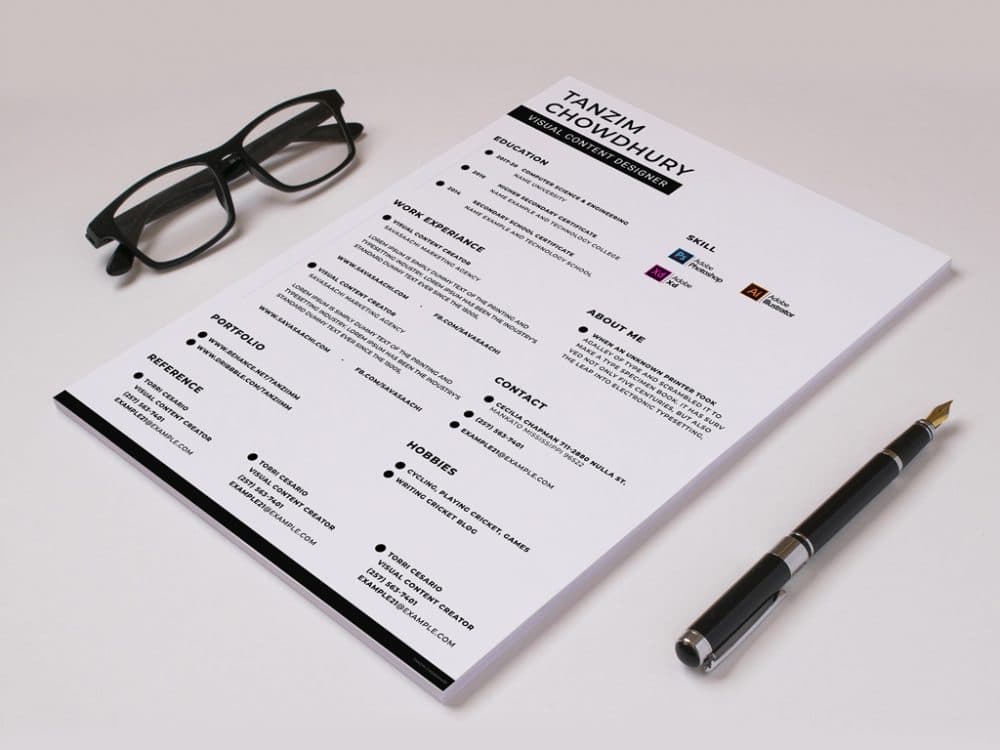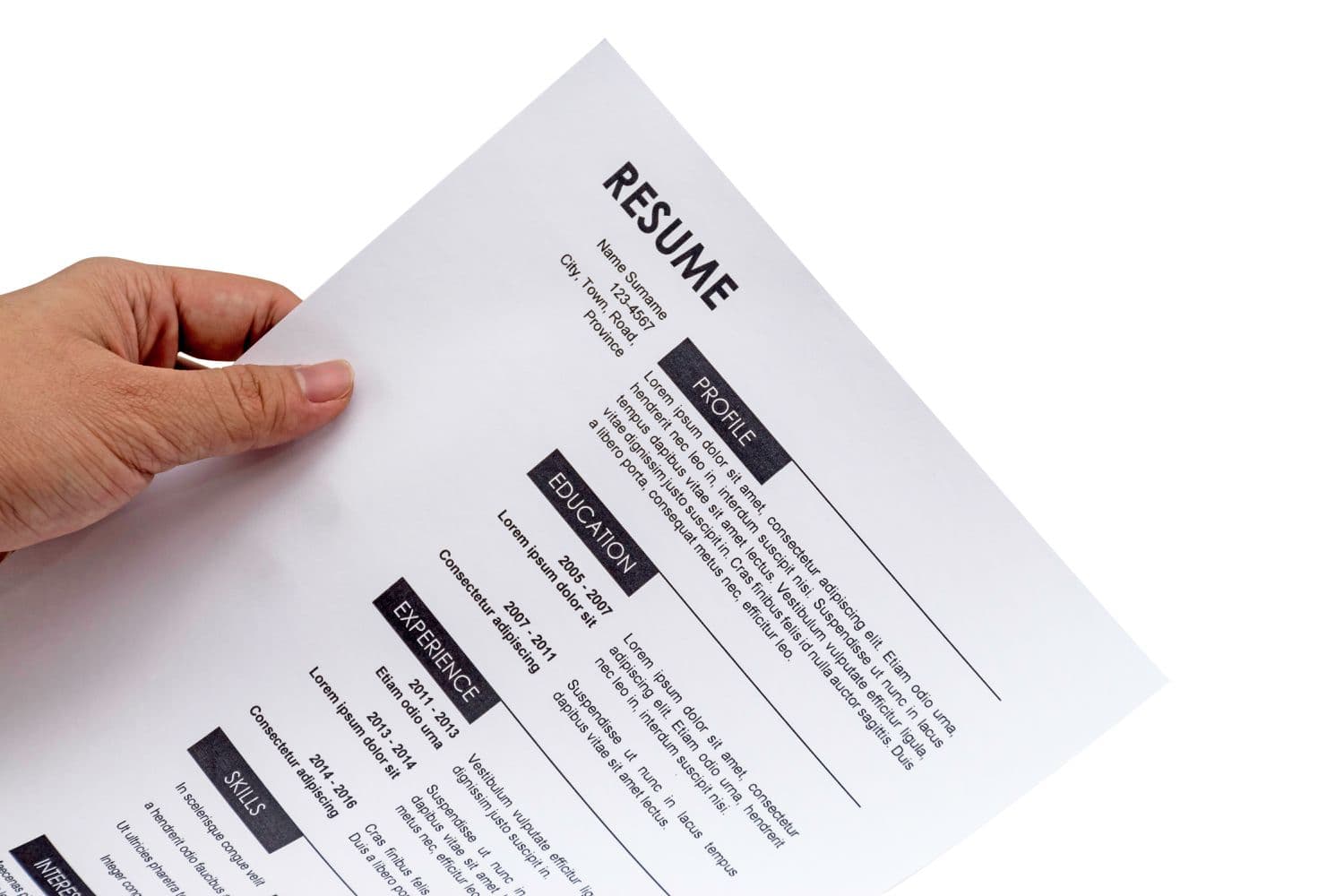In today’s dynamic job market, the role of resumes has evolved significantly. Your resume is no longer just a document; it’s your passport to career opportunities in the digital age. Whether you’re a seasoned professional or just starting your career journey, understanding the pivotal role of resumes is essential.
Creating a compelling resume is a skill that can be honed independently or with the assistance of a specialized Resume Web site. This website offers invaluable resources and tools to help job seekers craft resumes that make a lasting impression on potential employers.
In this exploration of the modern job market, we will delve into the evolution of resumes, uncover the essential elements of an effective resume, and discover how technology has reshaped the hiring landscape.
The Evolution of Resumes
The concept of resumes dates back centuries, but their form and function have undergone a remarkable evolution.
1. Historical Origins
Resumes, in their earliest form, were often simple letters of introduction or recommendation. These letters were hand-written and served as a means for individuals to vouch for one another’s character and skills. In a sense, they were the precursor to today’s professional references.
2. The Emergence of the Professional Resume
As societies became more structured, the need for standardized documents to assess an individual’s qualifications arose. The term “resume” itself comes from the French word “résumé,” meaning “summary.” In the 15th century, Leonardo da Vinci is said to have created one of the earliest recorded resumes, highlighting his skills and achievements as an artist and engineer.
3. Industrial Revolution and the Chronological Resume
With the onset of the Industrial Revolution in the 18th century, the nature of work and employment changed dramatically. Resumes began to emphasize job histories, with a focus on chronological listings of past positions, duties, and accomplishments. This format, still prevalent today, is known as the chronological resume.
4. The Information Age and the Digital Resume
The late 20th century saw a significant shift with the advent of computers and the internet. Resumes transitioned from paper to digital formats. This change allowed for more dynamic and visually appealing resumes, incorporating elements like bullet points, fonts, and various formatting options.
5. Tailored and Targeted Resumes
In the modern job market, one-size-fits-all resumes have given way to tailored and targeted documents. Job seekers now customize their resumes for specific positions, emphasizing relevant skills and experiences. This shift reflects the increasing importance of personalization in the job application process.
6. The Rise of Online Profiles
The 21st century has witnessed the rise of online professional networking platforms like LinkedIn. These platforms serve as living resumes, allowing individuals to showcase their skills, experiences, and endorsements in real-time. The online presence has become a crucial aspect of modern career management.
Understanding this historical evolution of resumes helps us appreciate the significance of these documents in today’s competitive job market. In the subsequent sections, we’ll delve deeper into the essentials of crafting effective resumes and explore how technology and human interaction intersect in the process of resume review.
Resume Essentials
Crafting a winning resume requires attention to key essentials:
- Contact Information: Provide accurate and updated contact details, including your name, phone number, email address, and location. Make it easy for employers to reach you.
- Professional Summary: Create a concise and impactful summary at the beginning of your resume. Highlight your career objectives, skills, and what makes you a standout candidate.
- Work Experience: List relevant job positions in reverse chronological order. Describe your achievements and responsibilities, focusing on quantifiable accomplishments.
- Education: Include your educational background, degrees earned, institutions attended, and graduation dates. Mention honors, awards, or certifications relevant to the job.
- Skills: Showcase your key skills and competencies that align with the job requirements. Use bullet points for clarity.
The Visual Aspect of Resumes

The visual aspect of your resume can make a significant impression:
- Formatting: Choose a clean and professional layout with consistent fonts and spacing. Use bullet points and headings to break up text and enhance readability.
- Visual Elements: Incorporate subtle design elements, like lines or icons, to add visual appeal. However, avoid over-the-top graphics or excessive colors that may distract from your content.
- White Space: Ensure your resume has ample white space to avoid overwhelming the reader. Proper spacing between sections and bullet points creates a visually pleasing document.
- Length: Keep your resume concise. A one-page resume is ideal for most job seekers, but if you have extensive experience, a two-page resume can be acceptable.
By paying attention to these resume essentials and the visual presentation, you can create a document that not only communicates your qualifications effectively but also captures the attention of hiring managers.
The Impact of Technology
Technology has revolutionized resume creation and distribution. Online job boards, applicant tracking systems (ATS), and digital submission methods have become the norm. Resumes must now be optimized with relevant keywords to pass ATS scans. Additionally, the rise of video resumes and online portfolios allows candidates to showcase their skills in innovative ways, reflecting technology’s ever-increasing role in the job market.
Building an Online Resume Presence
In today’s digital age, having an online resume presence is essential. Platforms like LinkedIn provide opportunities to create a professional profile, network with industry peers, and share your accomplishments. Maintaining an up-to-date online presence allows employers to find you more easily and reinforces your commitment to your career. It’s a valuable tool for both active job seekers and those looking to advance their careers.
The Human Element in Resume Review
While technology plays a significant role in the initial screening of resumes, the human element remains crucial. HR professionals and hiring managers rely on their expertise and intuition to assess a candidate’s suitability beyond keywords. The ability to effectively communicate one’s personality, passion, and unique qualities through the resume is vital. A well-crafted resume should not only pass ATS scans but also resonate with the person reviewing it.
Trends in Resume Writing
Resume writing is not static; it evolves with changing job market dynamics. Today’s trends emphasize clarity, brevity, and customization. The gig economy has led to an increase in hybrid and freelance work, necessitating adaptable resumes that highlight transferable skills. Additionally, the move toward diversity and inclusion has led to more focus on showcasing diverse experiences and achievements. Keeping up with these trends ensures your resume remains relevant and impactful in the modern job market.
Conclusion
In conclusion, resumes continue to serve as indispensable tools in navigating the complex landscape of the modern job market. From their humble beginnings as handwritten letters of introduction to today’s digitally optimized, tailored documents, resumes have adapted and evolved. They not only reflect a candidate’s qualifications but also their ability to adapt to changing times.
In an era of automation and digitalization, understanding the nuances of resume writing, both in terms of content and presentation, is more critical than ever. The interplay between technology and human judgment underscores the need for a balanced approach when crafting resumes that stand out.
As job seekers, embracing these changes and staying informed about industry trends will empower you to create resumes that not only pass through automated filters but also capture the attention of hiring professionals.
FAQ
Q1: How long should my resume be in the modern job market?
A1: For most candidates, a one-page resume is ideal. However, if you have extensive experience or specialized skills, a two-page resume may be appropriate. The key is to keep it concise and focused on relevant information.
Q2: Should I include a professional summary on my resume?
A2: Yes, a professional summary is highly recommended. It provides a brief snapshot of your qualifications and helps employers quickly understand what you bring to the table.
Q3: What role does LinkedIn play in the modern job search?
A3: LinkedIn is a powerful platform for building your online professional presence. It allows you to connect with industry peers, showcase your expertise, and even apply for jobs directly. An up-to-date LinkedIn profile is a valuable asset.


























0